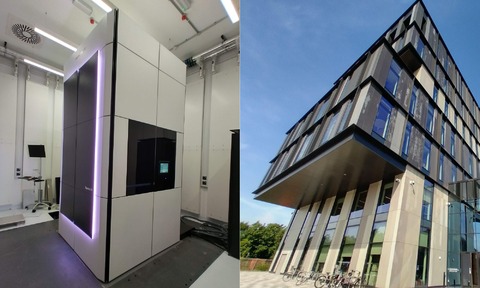High level solution keeps vibration at bay
23 Aug 2022

The demanding levels of isolation required for sensitive scientific equipment required an innovative approach at a state of the art facility...
Once the site of a disused railway yard, the £300 million Cardiff Innovation Campus now hosts cutting edge science facilities. These will feature a large and highly sensitive ThermoFisher electron microscope.
The manufacturer itself had stipulated that anything above VC-E level vibration was not permissible. Given the proximity of passing traffic and a nearby railway line, the acoustic consultant, designed stringent specifications to ensure the proper functioning of the equipment.
The manufacturer itself had stipulated that anything above VC-E level vibration was not permissible, so the construction engineering firm responsible for the project, Bouygues, called in vibration control specialist Mason.
Traditionally, spring mounts are often specified to isolate mechanical and electrical equipment or protect sensitive instrumentation. Although versatile and are often ideal for applications where low frequency vibrations are present, they were insufficient in this case.
Also, when springs are engineered to become softer and softer, and therefore more accepting to vibration, placing a large concrete base with a large electron microscope on top was problematic. Rubber spring isolators are also responsive to some levels of vibration, for example vibration in different directions.
Instead, air springs are recommended for the most demanding levels of vibration isolation – such as for sensitive medical equipment, like scanners, or high precision imaging equipment like an electron microscope.
Each spring is a rubber carcass with pressure is supplied via gas cylinders. Their very low levels of resonant response provide high levels of stability and isolation typically achieving natural frequencies of 2Hz.
Mason UK proposed a bespoke system of air springs with the electron microscope would be mounted on a large concrete fill block or ‘inertia base’ elevated from the ground using a system of bespoke air springs.
While the system of air springs required a huge pit in the floor it had also to work architecturally within the building. Another design constraint was the equipment’s need to be shielded from electromagnetic sources. So stainless steel, which has a reduced magnetic signature, was employed to ensure the isolation equipment being installed was interrupting or generating any pathway for electrical conductivity.
The electron microscope now resides on top of a large concrete block which can be raised using the system of air springs. When the system is actuated, pressure goes to the springs and the inertia base is lifted from its supports. Thus, any vibration is now through the air springs. The system is operated using a control box that was also designed and installed by Mason.
Without the benefit of advanced solutions, suggests the firm, many of the UK’s most innovative campuses would need to seek less accessible rural sites for housing such sensitive equipment and instrumentation.

